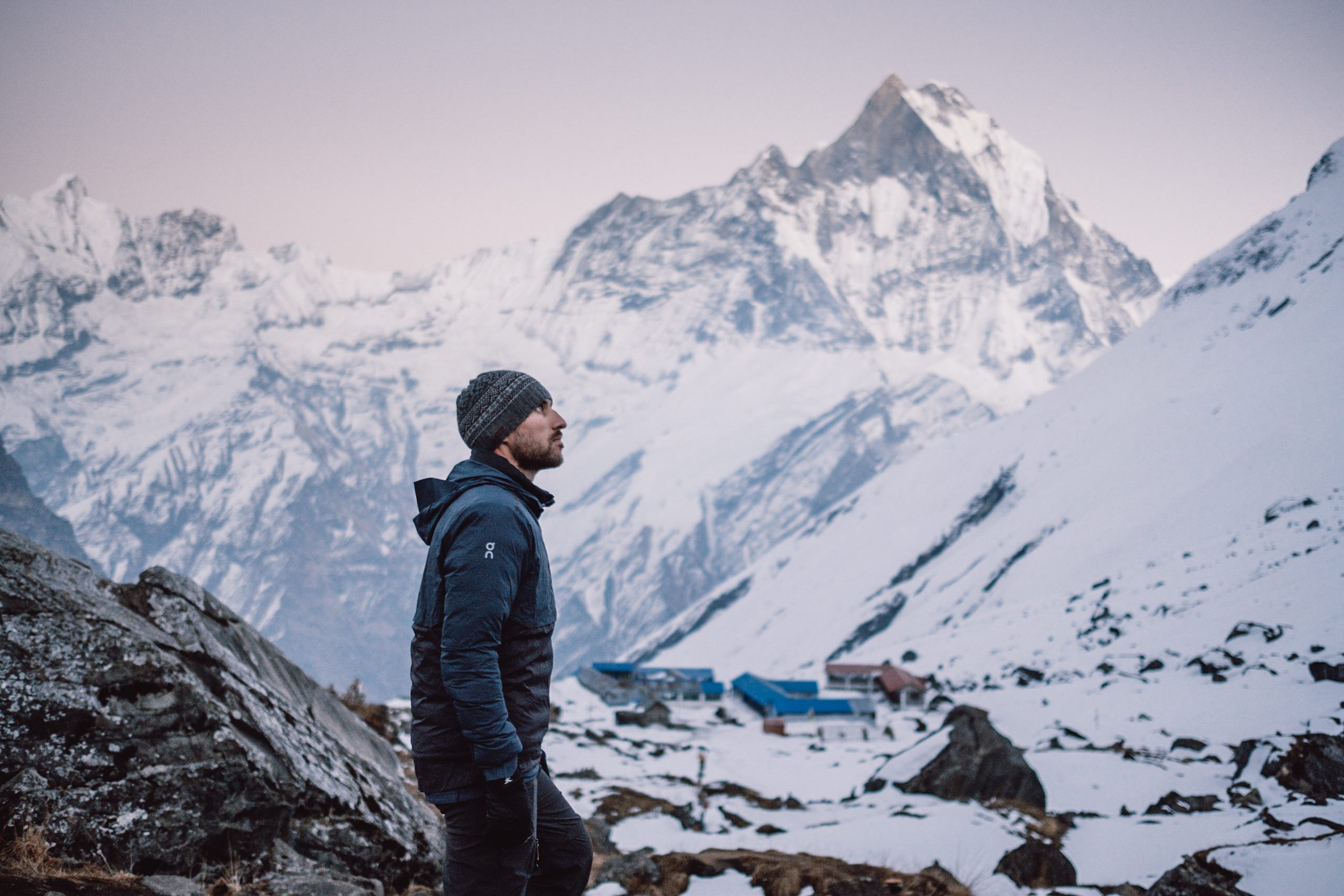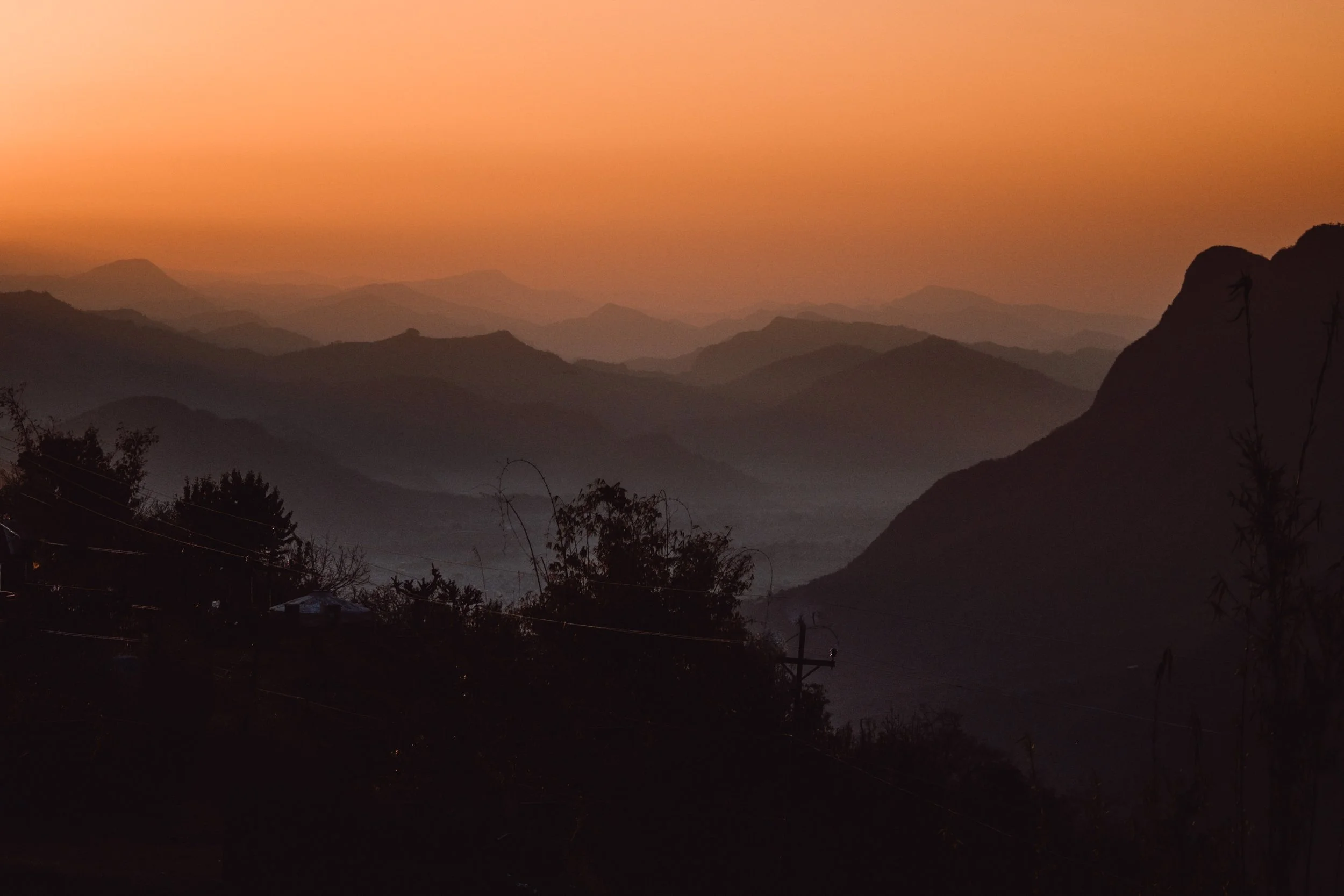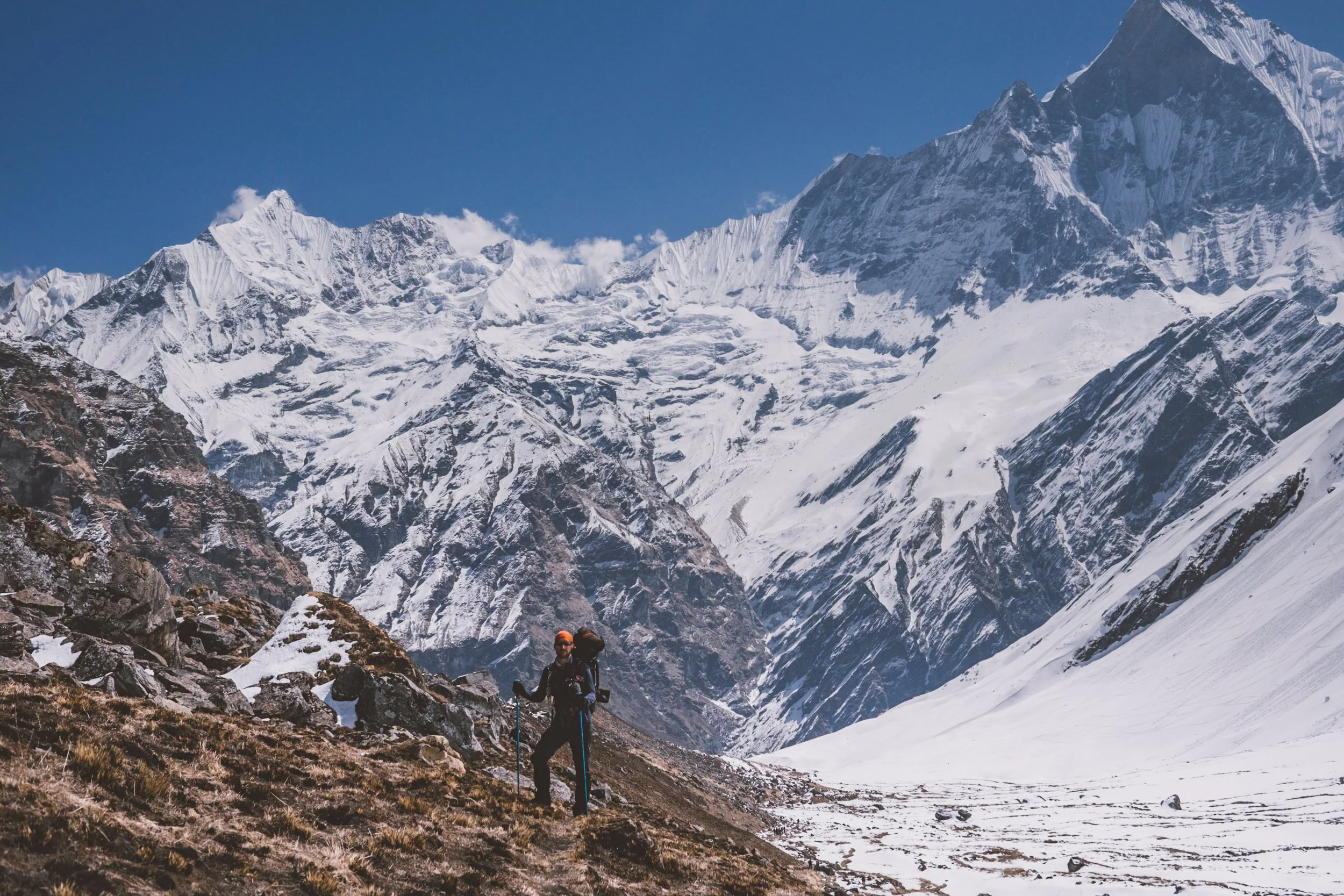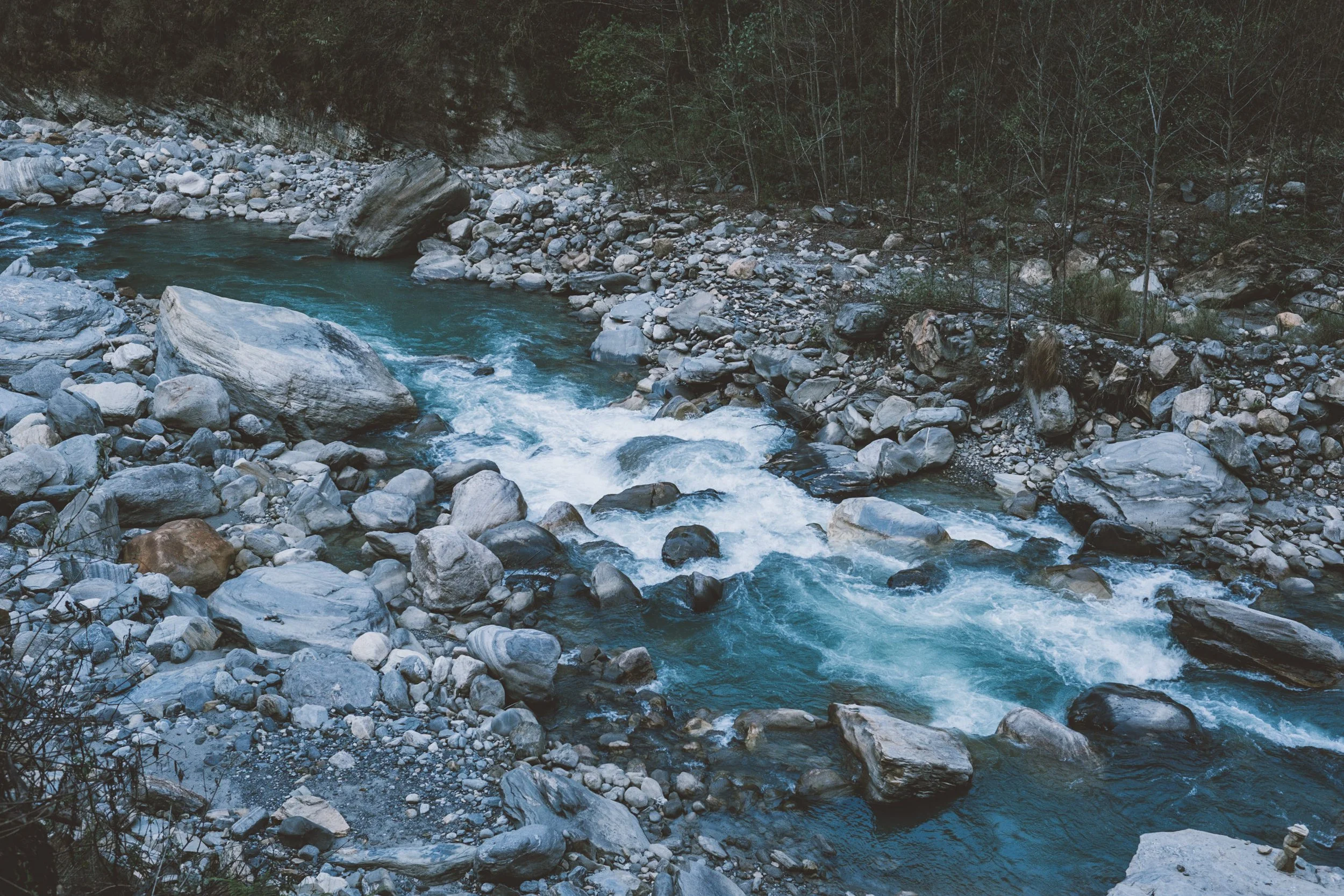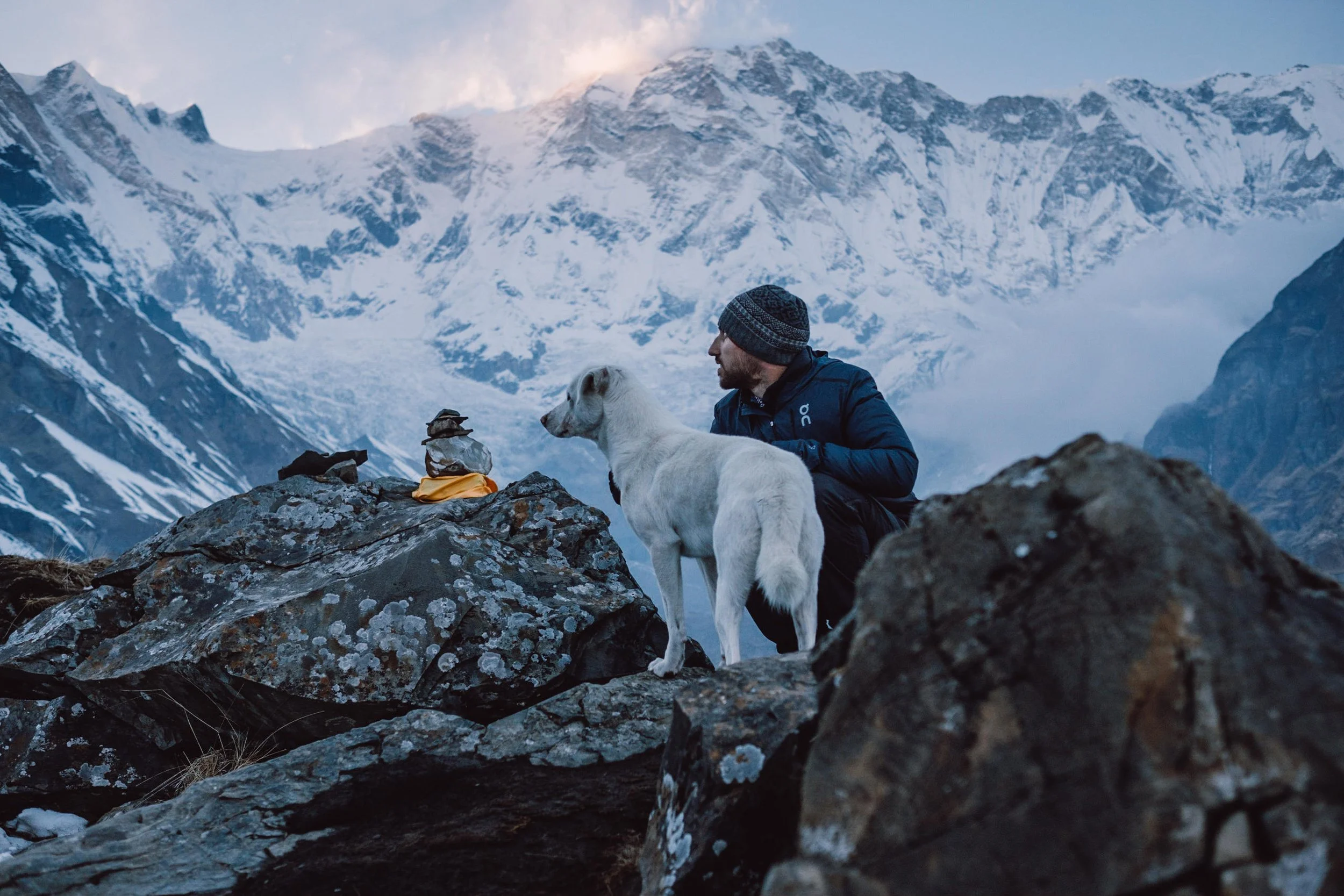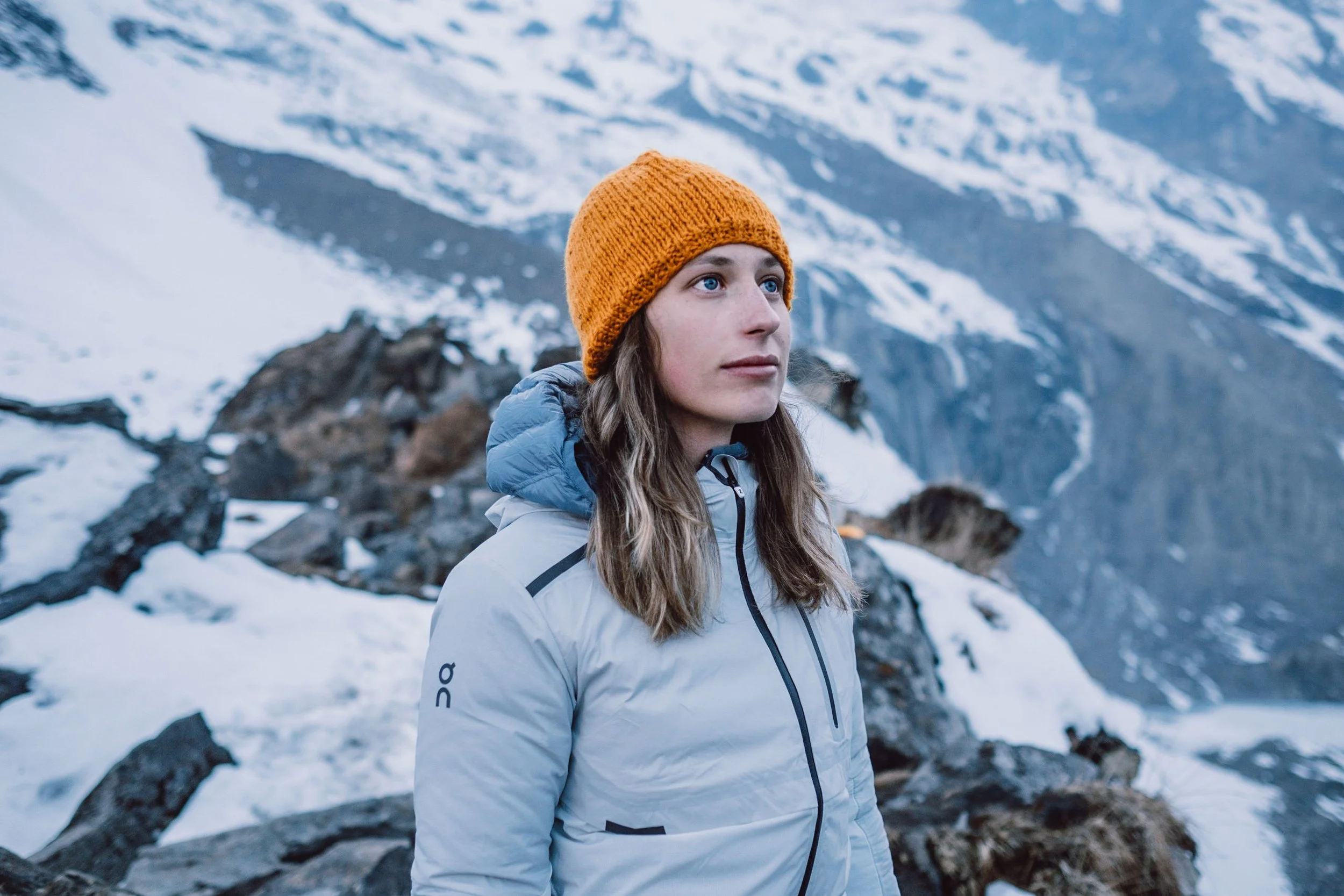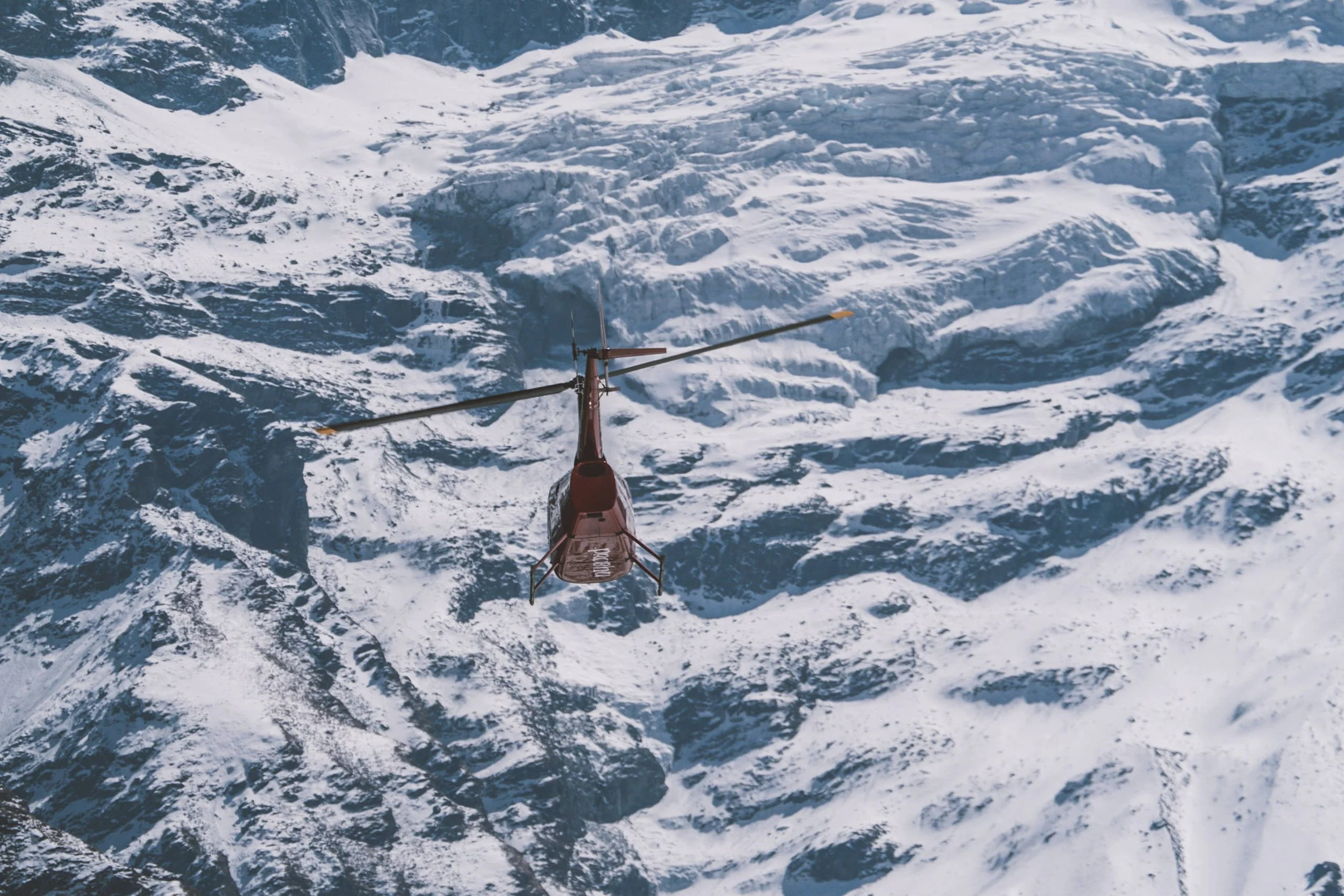This post may contain affiliate links, which means if you purchase through these links, we may receive a small commission at no cost to you. Thank you for supporting our website.
Planning a trek to Annapurna Base Camp (Annapurna Sanctuary Trek) in March? This guide covers everything you need to know about visiting one of Nepal’s most breathtaking regions at the start of the spring trekking season. From what the weather is really like to what to pack, crowd levels, trail conditions, and where to stay along the way. This is your complete guide to Annapurna Base Camp in March.
March marks the beginning of Nepal’s trekking season, bringing crisp mornings, clear mountain views, and mild daytime temperatures. The trails start to come alive after the winter lull, with rhododendrons beginning to bloom and guesthouses reopening in the higher villages. If you’re looking to experience the Annapurna region before the peak crowds of April and May, March offers the perfect balance of great weather and quieter trails.
Whether you’re preparing for your first trek in Nepal or returning for another Himalayan adventure, this guide will help you plan the ideal Annapurna Base Camp (ABC) experience.
Contents
How to Use This Guide
Use the table of contents above to navigate easily to the sections you’re most interested in. This guide includes detailed information on the weather, trail conditions, accommodation, packing tips, permits, and trekking routes.
If you’re visiting Nepal in March, this will help you decide whether Annapurna Base Camp is the right trek for you and how to prepare for the journey ahead.
Why Trek Annapurna Base Camp in March
March is one of the best times of year to visit Annapurna Base Camp. The snow from the winter months begins to melt, revealing lush valleys, running rivers, and clear skies. The visibility during this time is often excellent, offering postcard-perfect views of peaks like Machapuchare (Fishtail), Hiunchuli, and Annapurna I.
We chose to hike to Annapurna Base Camp over other famouse trekking routes in Nepal such as Everest Base Camp. We did this because we had heard that the Everest route was extremely popular and busy. You do also need to fly into the worlds most dangerous airport at Lukla to start the Everest Base Camp Trek. This adds further cost and the potential for multi day delays due to weather at Lukla airport.
Unlike the busier trekking months of April and October, March provides a quieter, more peaceful experience. Trails are active but not crowded, lodges have space available, and temperatures are comfortable for hiking during the day.
If you love crisp mornings, blooming rhododendron forests, and dramatic mountain scenery, March is an ideal time to go.
Annapurna Base Camp Weather in March
The weather in March is generally stable, with bright mornings and cooler evenings. While higher elevations can still see snow, most of the trail is clear and passable. Rain is rare, though mist can occasionally roll in during the afternoons.
Trekking Conditions and What to Expect
By March, most of the snow from January and February has started to melt, making the trail accessible and less slippery. You’ll likely encounter some icy sections near Deurali or Machapuchare Base Camp, but these are manageable with good boots and trekking poles.
There are certain sections where leaving early in the morning is advisable due to avalanch risk. Your guide will be well aware of these sections and navigate them with you.
The air is fresh and the scenery breathtaking, especially as you approach Base Camp itself. Mornings usually start clear and bright, perfect for photography, while afternoons can be cloudier. The valleys are beginning to turn green again, and rhododendron trees burst into bloom as you descend later in the day.
Because March is still early in the trekking season, you’ll experience a peaceful trail with a nice sense of community among other trekkers.
We were lucky enough to arrive at Annapurna base camp to fresh snow making the enitre sanctuary even more beautiful and perfect for photography.
The Route to Annapurna Base Camp
Most trekkers start their journey from Phedi, following a route that passes through charming Gurung villages like Ghandruk, Chhomrong, and Sinuwa before heading into the high valleys leading to Machapuchare Base Camp (MBC) and finally Annapurna Base Camp (ABC).
We caught a local bus from Pokhara to Phedi where we started our hike. The roads that were under construction in 2018 are now fully completed making the bus journey much more comfortable, but there comes a cost of cutting into to the beautiful natural surroundings.
We used the excellent Lonely Planet ‘Trekking in the Nepal Himalaya’ book. We had it downloaded on our phones and used the Annapurna Sanctuary Trek section.
The book included recommend daily milage, where to stay and detailed maps and elevation graphs. It was an excellent resource as we navigated the route without any guides or porters. (It is now a legal requirement since 2023 to hire a guide for the majority of treks in Nepal)
The trek typically takes 7–10 days, depending on your pace and itinerary. Many combine ABC with a short detour to Poon Hill for sunrise views of the Annapurna range before heading deeper into the valley.
Guesthouses and tea houses line the entire route, making it easy to find meals and accommodation along the way.
Crowds and Atmosphere in March
March sees a noticeable increase in trekkers after the quiet winter months, but it’s still far from busy. The mix of solitude and sociability makes it one of the most enjoyable months to hike.
Tea houses are open and well-stocked, but you won’t need to worry about rooms being fully booked. You’ll also meet local villagers preparing for the upcoming peak season, and porters and guides are widely available.
What to Pack for Annapurna in March
Packing correctly is key for comfort at different altitudes. March weather can shift quickly between sunny warmth and chilly evenings.
Essentials include:
Waterproof trekking boots with good grip
Layered clothing (base, mid, and outer)
Down jacket for higher altitudes
Thermal wear for cold nights
Packable rain jacket
Trekking poles
Hat, gloves, and sunglasses
Refillable water bottle
Basic first aid kit and altitude medication
Power bank and headlamp
Down sleeping bag
Accommodation and Food Along the Route
Accommodation on the Annapurna Base Camp trek ranges from simple mountain lodges to well-run tea houses with great views. In March, most are open, offering hot meals, shared bathrooms, and basic comforts like blankets and fireplaces.
Meals are hearty and carb-based, perfect for refueling after long trekking days. Expect dishes like dal bhat, noodles, momos, and pancakes. As you climb higher, menu choices can be more limited and prices rise due to the difficulty of transport.
Hot showers and Wi-Fi are available in some places but become rarer the higher you go. Bring cash, as ATMs are only available in Pokharal.
Where to stay
During the month of March you should be able to turn up at any of the teahouses along the route and find a room for the night. When staying in Kathmandu and Pokhara we recommend the following.
BOOK | Hotel Thamel House Kathmandu
BOOK | Temple Tree Resort & Spa Pokhara
Looking for something else? The use our handy interactive map to find your perfect stay.
Is Annapurna Base Camp Safe in March?
Yes, March is generally a safe and stable time for the trek. The risk of avalanches is lower than in February, though you should always check local updates if there’s been heavy snowfall. Trails are well-marked and busy enough that you’ll rarely walk completely alone.
Hiring a local guide and a porter is required and they will be aware of any risks along the route. They’ll help with navigation, carry your gear, and share insight into local culture and customs.
How to Get to the Starting Point
We few into Kathmandu, where we found ourselves a cheap guesthouse in the Thamel area. Here we were able to explore all the knockoff hiking equipment shops, hire down sleeping bags and book bus tickets to Pokhara. As we were hiking without a guide before the rule changes, we also visited the permit office to secure our hiking permits.
With the many rule changes over the last few years, check with you guide for up to date advice on what permits are needed. The famous TIMS card (Trekkers' Information Management Systems) is is a way to keep track of hikers and you will also need a Annapurna Conservation Area Permit (ACAP).
You can obtain hiking permits in both Kathmandu or Pokhara. We would suggest getting them in Kathmandu if thats your point of arrival to save time and potential stress.
Most trekkers base themselves in Pokhara, Nepal’s lakeside adventure hub. From there, you can take a jeep or local bus to Phedi to start your trek to ABC.
Pokhara itself is worth spending a few days in before or after your trek, with relaxing lakeside cafes, yoga studios, and mountain viewpoints.
Responsible Trekking Tips
The Annapurna region is part of a protected conservation area, and respecting the environment is vital.
Carry your own reusable water bottle and use local purified water, you can also get boiled purified water from many Tea houses.
Take your rubbish with you, avoid leaving any waste behind.
Stay on marked trails to prevent erosion.
Support locally owned tea houses and hire local guides.
Before entering the sanctuary you will see signs asking you not to bring meet past a certain point, please respect the local customs.
Frequently Asked Questions About Annapurna Base Camp in March
Is March a good time to trek Annapurna Base Camp?
Yes, March is one of the best months for trekking, offering clear skies, stable weather, and blooming rhododendrons. It’s ideal if you want to avoid the crowds of April and October.
How cold is it at Annapurna Base Camp in March?
Daytime temperatures can reach around 10°C, but nights at Base Camp often drop below freezing, sometimes as low as -5°C.
Do I need crampons or special gear in March?
Not usually. Good trekking boots and poles are enough. However, lightweight microspikes can be helpful if snow or ice lingers near higher sections. We took microspikes with us and even in the snow at ABC we did not use them.
Are permits required?
Yes. You’ll need the TIMS and Annapurna Conservation Area Permit (ACAP), which are available in Kathmandu and Pokhara.
Can I trek without a guide?
You can, but hiring a local guide or porter is highly recommended for navigation, safety, and local insight, and it supports the regional economy.
Will there still be snow in March?
There may be patches of snow above Machapuchare Base Camp, but trails are mostly clear. The snow adds to the beauty of the landscape without making trekking difficult.
Watch our Nepal Video
Plan your Nepal adventures with our guides
Our Hiking Route to Annapurna Base Camp in Nepal
39 Amazing Photos That Will Make You Want to Hike to Annapurna Base Camp in Nepal
